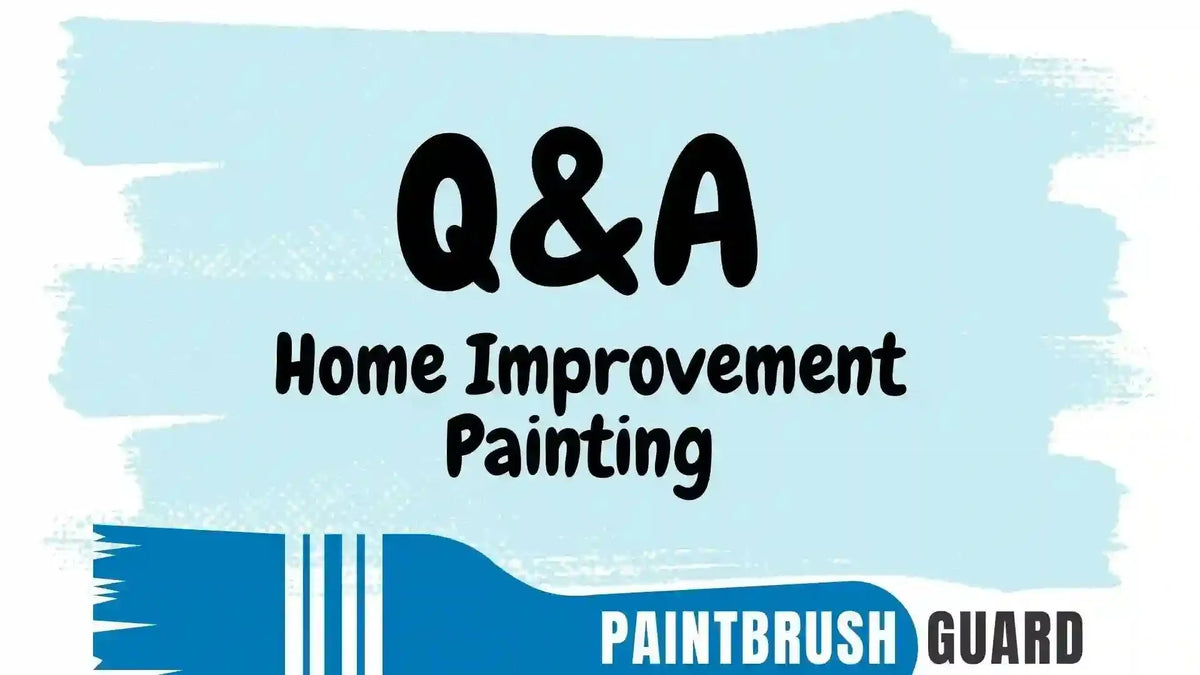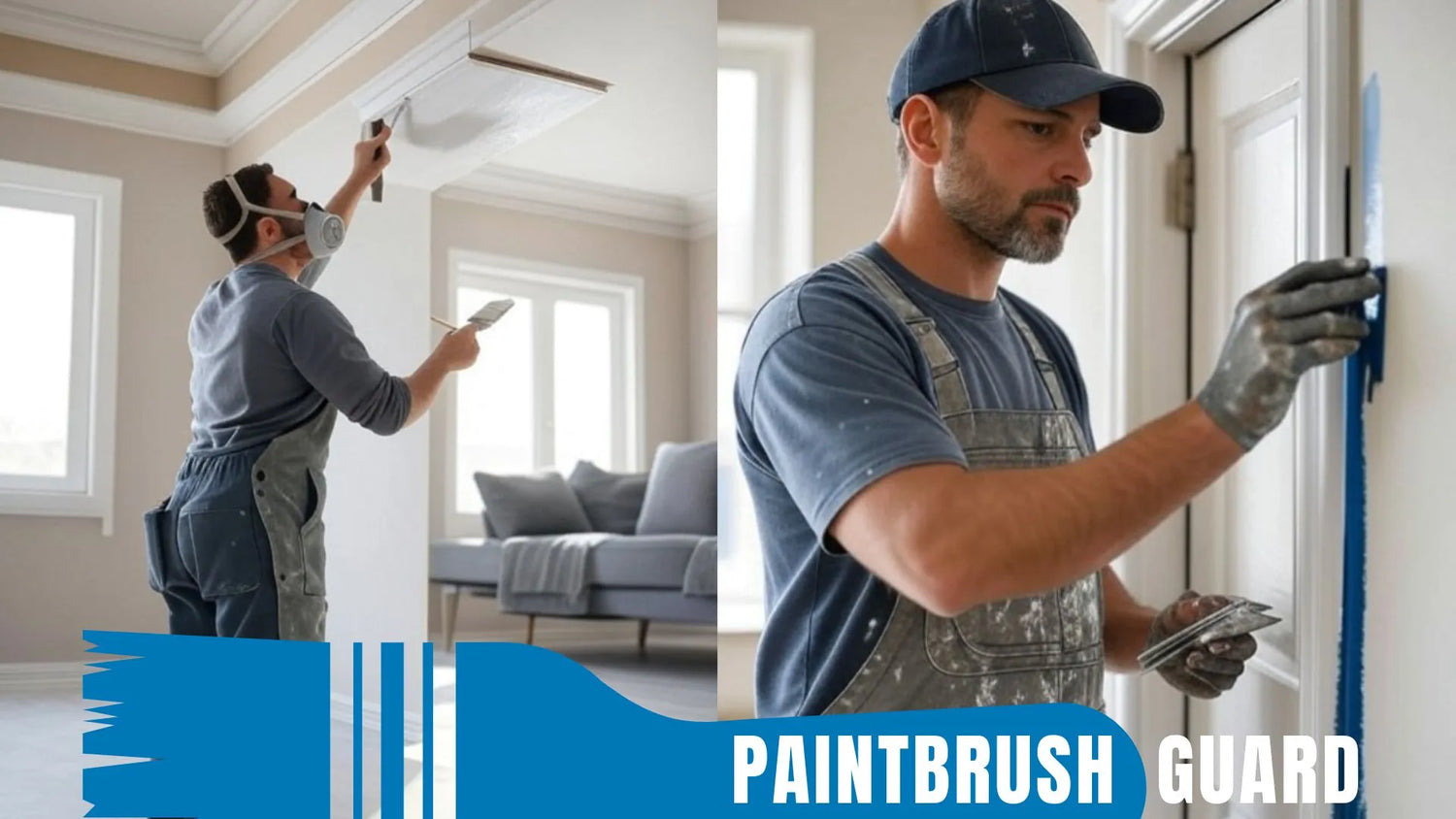
What Are the Essential Painting Tools and Equipment?
|
Time to read 5 min
|
Time to read 5 min
Professional painting tools and equipment ranging from $50–$500+ include high-quality brushes, rollers, sprayers and prep tools designed for precision, efficiency and durability in large or complex painting projects.
With no cleanup required after a painting session, you can take a short break mid-project or wrap up your painting for the day, your brush stays ready without the need to clean.
Professional painters rely on specialized tools for superior results.
Key tools include:
Learn more about Paintbrush Guard: This guide tackles the top 20 questions about storing paintbrushes, from quick breaks to long-term care, and even challenges like humid coastal areas.
Beyond brushes and rollers, professionals use:
A basic professional painting kit costs $50–$200, including brushes, rollers, tape, and drop cloths. Advanced setups with sprayers and ladders can exceed $500.
For example:
Discover how house paint colors influence mood & get expert tips on choosing the best colors for every room to create a vibrant, harmonious home environment.
Professional tools offer durability, precision and speed. High-quality brushes reduce streaks, rollers apply paint evenly and sprayers cut time on large projects by 50%, per a 2025 painting efficiency study.
Ergonomic designs, like Purdy’s cushioned handles, minimize fatigue during long jobs.
The Paintbrush Guard enhances efficiency by keeping brushes wet between sessions, reducing cleaning time and preserving bristle quality, as noted by 60% of pros in a 2024 PaintTalk poll.
Select tools based on project scope:
Match tools to paint type, synthetic bristles for latex, natural for oil-based—to avoid damage, per a 2023 DIY Network guide.
Test sprayers for adjustable pressure to handle different surfaces, as recommended in a 2025 painting manual.
Proper maintenance extends tool life. Clean brushes with soap for water-based paints or thinner for oil-based ($5–$15 per cleaning), and store them in the PBG Paintbrush Guard to prevent drying.
Rinse roller covers immediately to avoid clogs, and clean sprayer nozzles after each use to prevent blockages, per Graco’s 2025 maintenance guide.
Store tools in a dry, organized space to avoid rust or damage. A 2024 survey showed 70% of pros saved $100–$200 yearly by maintaining tools properly.
Professionals or frequent DIYers benefit from upgrading to pro-grade tools for durability and efficiency.
Cheap brushes ($3–$5) shed bristles, and low-end sprayers ($50–$100) clog easily, per a 2023 Consumer Reports review. Investing in quality tools boosts results, especially for resale prep, as a 2024 Zillow report noted professionally painted homes sold for 5% more.
For occasional painters, mid-range tools ($50–$150) offer a cost-effective balance.
Painting interior walls? Our 10-step beginner guide with product recommendations ensures a flawless, professional finish for any room.
Professional painting tools and equipment, costing $50–$500+, include brushes, rollers, sprayers, and prep tools designed for precision and durability.
Choosing the right tools based on project size and paint type ensures efficient, high-quality results.
The Paintbrush Guard simplifies maintenance by keeping brushes ready, saving time and costs.
Whether you’re a pro or a dedicated painter, investing in quality tools enhances performance and longevity for all painting projects.
Core tools include high-quality brushes ($10–$30 each, e.g., Purdy XL), rollers ($15–$50 for frames and covers), and airless sprayers ($200–$500+, e.g., Graco Magnum X5). A basic kit costs $50–$200, while advanced setups with sprayers and ladders can exceed $500.
Beyond brushes and rollers, professionals use extension poles ($15–$40), canvas or plastic drop cloths ($10–$50), painter’s tape and dispensers ($5–$20), electric sanders ($50–$150), scrapers ($5–$15), and ladders ($50–$300) for safe, efficient painting.
The Paintbrush Guard vacuum-seals brushes, keeping them wet between sessions, reducing cleaning time, and preserving bristle quality. This saves time and supports eco-friendly maintenance, with 60% of pros in a 2024 PaintTalk poll noting its efficiency benefits.
For small jobs, use brushes and rollers ($50–$100). For large or exterior projects, invest in sprayers and extension poles ($200–$500). Match bristles to paint type (synthetic for latex, natural for oil-based) and use specialty tools like detail brushes for intricate work.
Professional tools offer durability, precision, and speed, reducing streaks and cutting project time by up to 50%. They’re ideal for frequent DIYers or pros, and a 2024 Zillow report notes that homes painted with quality tools can sell for 5% more, making the $50–$500+ investment worthwhile.
Check our house painting guides, exterior house painting and interior house painting or other releated painting articles here:
Learn How Paintbrush Guard Vacuum Storage Reduces Waste
Sustainable painting with paintbrush vacuum storage: How eco-friendly tools helps homeowners with house painting. Protect the planet when painting your home.
How Do You Make a Paintbrush Last With Vacuum
Make a paintbrush last with vacuum storage by keeping the bristles wet. Learn about proper cleaning, conditioning, and tips to extend its life sustainably.
How Much Does a Good Paintbrush Cost?
A good paintbrush costs $8–$30, depending on size, material, and brand. Explore types, price factors, and how vacuum sealing stora saves costs for painting.

Learn about eco-friendly painting, tips and tutorials on house interior and exterior surfaces, so you can get started with your project without any surprices during or after your painting.

Learn how interior house paint colors influence mood with expert tips on room preference so you can pick the best colors for a harmonious home environment.
We focus on the most popular shades for each interior colors, so you don't miss no matter what color you pick.

Learn how this innovative tool allows you to store paintbrushes without the need for immediate cleaning, offering significant advantages in time savings, water conservation, reduced chemical pollution, and lower costs for supplies.
